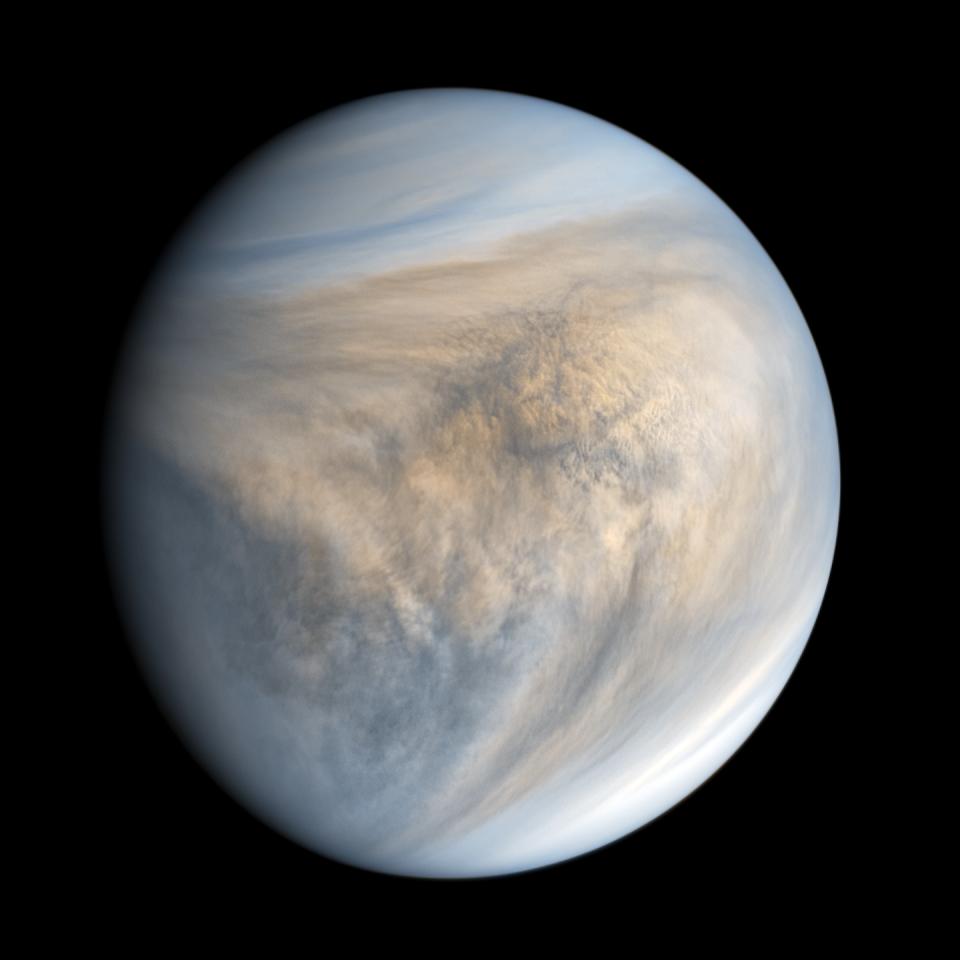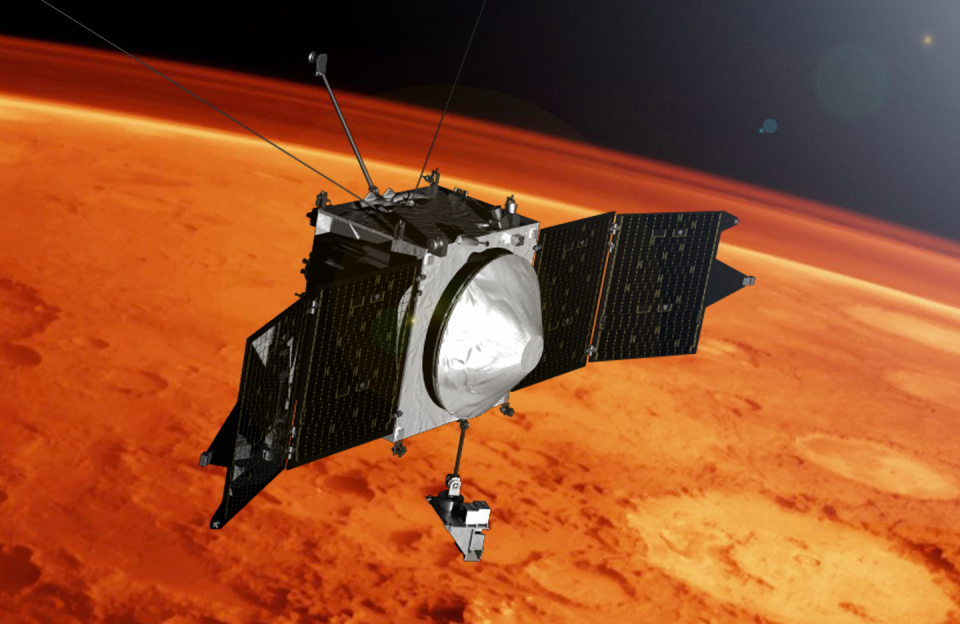Today, the atmosphere of our neighboring planet Venus is as hot as a pizza oven and drier than the driest desert on Earth; But it wasn’t always like this.
Billions of years ago, Venus had as much water as Earth has today. If this water were liquid, Venus might once have been habitable.
Over time, almost all of this water was lost. Understanding how, when, and why Venus lost its water helps planetary scientists like me understand what makes a planet habitable or what can turn a habitable planet into an uninhabitable world.

Scientists have theories explaining why most of this water disappeared, but more water disappeared than they thought.
In a study conducted in May 2024, my colleagues and I uncovered a new dehydration process that went unnoticed for decades but may explain this water loss mystery.
Energy balance and premature dehydration
The solar system has a habitable zone; a narrow ring around the Sun where liquid water may exist on the surfaces of planets. Earth is in the middle, Mars is outside on the very cold side, and Venus is outside on the very hot side. Where a planet falls on this habitability spectrum depends on how much energy the planet receives from the Sun and how much energy the planet emits.
The theory for how most of the water loss on Venus occurs depends on this energy balance. On early Venus, sunlight split the water in its atmosphere into hydrogen and oxygen. Atmospheric hydrogen heats a planet; It’s like having too many blankets on the bed in summer.
When the planet gets too hot, it throws off the blanket: Hydrogen escapes into space in a process called hydrodynamic escape. This process eliminated one of the key components of water on Venus. It is not known exactly when this process occurred, but it probably occurred within the first billion years or so.
Hydrodynamic escape stopped after most of the hydrogen was removed, but some hydrogen was left behind. It’s like throwing away a water bottle; There will still be a few drops left at the bottom. These leftover drops cannot escape in the same way. Another process must still be at work on Venus, continuing to remove hydrogen.
Small reactions can make a big difference
Our new study reveals that an overlooked chemical reaction in Venus’ atmosphere could produce enough hydrogen leakage to close the gap between expected and observed water loss.
Here’s how it works. In the atmosphere, positively charged gaseous HCO⁺ molecules, consisting of one atom each of hydrogen, carbon and oxygen, combine with negatively charged electrons due to the attraction of opposite poles.
However, when HCO⁺ and electrons react, HCO⁺ splits into a neutral carbon monoxide molecule CO and a hydrogen atom H. This process energizes the hydrogen atom, which can then exceed the planet’s escape velocity and escape into space. . The entire reaction is called HCO⁺ dissociative recombination, but we like to call it DR for short.
Water is the original source of hydrogen on Venus, so DR effectively dries out the planet. DR likely occurred throughout Venus’ history, and our studies show that it likely continues today. This overturns our current understanding of hydrogen escape on Venus, doubling the amount of hydrogen escape previously calculated by planetary scientists.
Understanding Venus with data, models and Mars
We used both computer modeling and data analysis to study DR on Venus.
The modeling actually started as a Mars project. My PhD research involved discovering what conditions make planets habitable for life. Mars also had less water than Venus, and most of it was lost to space.
To understand hydrogen escape on Mars, I developed a computational model of the Martian atmosphere that simulates the atmospheric chemistry of Mars. Although they are very different planets, Mars and Venus actually have similar upper atmospheres, so my colleagues and I were able to extend the model to Venus.
We find that HCO⁺ dissociative recombination produces abundant hydrogen leakage in the atmospheres of both planets; This was consistent with measurements of the Martian Atmosphere and measurements taken by the Volatile EvolutioN or MAVEN mission, a satellite orbiting Mars.


It would be valuable to have data collected in Venus’ atmosphere to support the model, but previous missions to Venus have not measured HCO⁺; Not because it’s not there, but because they’re not designed to detect it. However, they did measure the reactants that produce HCO⁺ in Venus’ atmosphere.
By analyzing measurements made by Pioneer Venus, an orbiter and research mission that studied Venus between 1978 and 1992, and using our knowledge of chemistry, we showed that HCO⁺ should be present in the atmosphere in amounts similar to our model.
follow the water
Our study filled in a piece of the puzzle of how water is lost from planets, which in turn affects how habitable a planet is for life. We learned that dehydration does not occur all at once, but over time through a combination of methods.
The faster loss of hydrogen through the DR today means that less time is required overall to remove any remaining water on Venus. This means that if oceans were present on early Venus, they may have been present for longer than scientists thought before water loss through hydrodynamic escape and the onset of DR. This would allow more time for possible life to emerge. But our results do not necessarily mean that oceans or life exist; Answering this question will require much more science over the years.
New Venus missions and observations are also needed. Future Venus missions will provide some atmospheric measurements, but they will not focus on the upper atmosphere, where most of the HCO⁺ decomposer recombination occurs. A future Venus upper atmosphere mission, similar to the MAVEN mission to Mars, could greatly expand everyone’s knowledge of how the atmospheres of terrestrial planets form and evolve over time.
With technological advances and increasing interest in Venus in recent years, now is the perfect time to turn our eyes to Earth’s sister planet.
This article is republished from The Conversation, an independent, nonprofit news organization providing facts and authoritative analysis to help you understand our complex world. Written by: Eryn Cangi, University of Colorado Boulder
Read more:
This material is based on work supported by the National Science Foundation Graduate Research Fellowship Program under Grant DGE 1650115. Any opinions, findings, and conclusions or recommendations expressed in this material are those of the author(s) and do not necessarily reflect the views of the author. National Science Foundation.